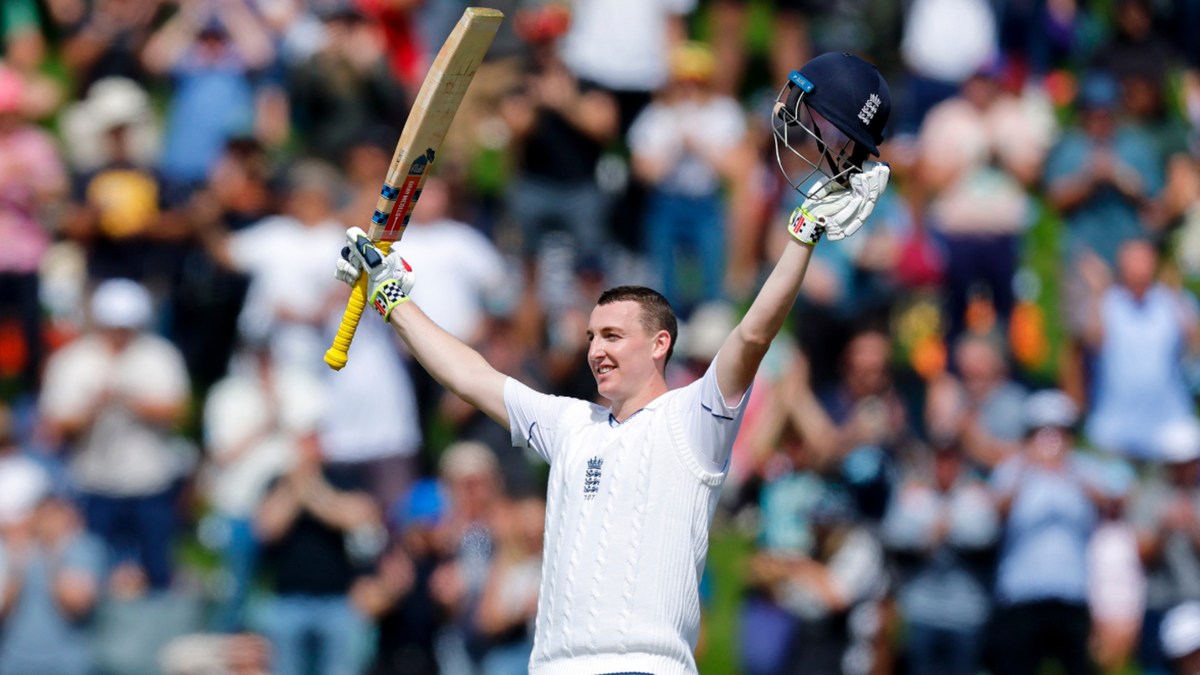
Wisden Cricket Monthly editor-in-chief Phil Walker pays tribute to Harry Brook after his latest masterwork, making an unbeaten 184 off 169 to rescue England from 21-3 against New Zealand at the Basin Reserve.
You make a grab for the parts that speak to you. It could be the little bits, those snapshots and vignettes that accrue to turn the story vast. Just as likely it’s the digits, lighting up your face with their shimmer, numbers never seen before on the scorecards of your life because no one’s ever racked them up before. Perhaps technique moves you, the geometry of a modern paradigm. Or maybe you’re drawn to the arc, to the promise of unrevealed narrative, desperate to know how and where it ends, this ultimate potboiler; and as impatient to savour the next page as you were last night, don’t deny it, when you found yourself caught in the strangest of states: simultaneously watching Joe Root bat, which is all you’ve wanted to do for the last decade of your life, while gently and shamefully hoping that he drops a single and clears off to the other end.
You’re partial to the details. The bit where he walks out to bat in a long-sleeved jumper, because who bats in one of those? You even like the bat itself, taped-up at the tatty toe as well as across the meat, cracked and ragged around the edges, echoes of David Hookes at the ‘G, of Aravinda’s unmatching gloves, articulating something about the sincerity of talent. You particularly like the low-key celebration, the slowish-motion nod to the inevitability of the moment, with a tip to the galleries and a faux-bashful smile for his mate. You like, too, that he’s not averse to the odd wink, that he talks straight down the lens of any camera, and says why wouldn’t you hit six fours in an over of a Test match when there are six balls there to hit. And you think you like the sense that all this was ordained, that his ascent was delayed only by time, and that now he’s here, where he’s been due, he’s not going to hang around to savour the surroundings when there’s work to do.
You especially love the numbers. All those beautiful columns and rows. More runs than anyone ever after nine Test knocks. The strike rate matching the average that matches the Don. The race to haul in Jessop’s fastest. The pursuit of the quickest to a thousand, and then to two, three, five, 10. The fact (CricViz incoming) that he’s attacked more than half the balls he’s faced in Test cricket, yet offers a lower false-shot percentage than Pujara. And the almost comforting knowledge that it can’t carry on like this, that cricket will snap him back, and yet at the same time you’re beset by this nagging voice dropping mad ideas into your brain’s shaky left side, that with cricket experimenting with the idea that nothing’s impossible any more, that maybe those faraway numbers aren’t so… well, you know. Forget it. Ridiculous. And yet, listen, there it goes again. Tap tap. Tap tap.
You study the style. You note the minuscule triggers that shift him onto the balls of his feet. You see the bat cocked, its toe pointing skywards, and see the way his head dips into the ball, and how the shoulders rotate on impact, and how he stays in the shot just that second longer than the others. You’ve begun to notice that he seems to know what’s coming. That he doesn’t just see it in the flight, that’s the easy bit, because he’s already intuited where it will be before the bowler knows himself. Pietersen was asked once what the secrets were to playing pace. Anticipation, he said. Anticipation and instinct. Harry Brook has these magics. Watch him against pace. They pitch one up, he deals with it. Perhaps he goes down the ground, or out of it; sometimes he even hits a fielder; every so often, just to rub it in, he drops it at his feet. Yet by the time he’s done with the first part he’s already decided what to do with the follow-up, which will be shorter, and because he knows it, he’s already planned where to hit that one too. Invariably he will angle that meek, safety-first follow-up behind square on the off-side; every so often, if it’s at him, he will snap it over the rope at deep square.
You tell yourself he’s played on some flat ones, and only for five minutes, and you would be right. You think that he’s not yet faced sustained pace or ragging turn. But you also know that it doesn’t wash, because you’ve seen enough to know when you know. Perhaps, you wonder, if all those millions already banked from his IPL gig, on top of various assorted mini-IPLs, may yet turn his head. You allow thoughts to creep in that this is all very well, but what about six years from now, when he’s still not turned 30 and he’s run out of Test teams to play against? What then? But then you check yourself, high hands, full face, immaculate transference of weight, and tell yourself that as long as the game continues to deliver talents like this, producing stories upon stories of unending flow, it will live on forever, perpetually 184 not out overnight.








